[Editor’s Note: Today’s post complements the previously published Four Models of the Post-COVID World, exploring in greater detail how this year’s events have altered the trajectory of the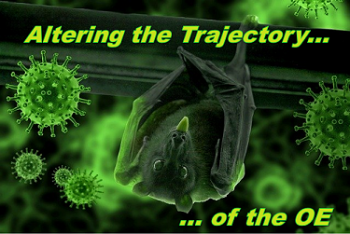 near term Operational Environment (i.e., now through 2028) and the associated ramifications for the U.S. Army as a whole, and the Training and Doctrine Command (TRADOC) in particular. Read on!]
near term Operational Environment (i.e., now through 2028) and the associated ramifications for the U.S. Army as a whole, and the Training and Doctrine Command (TRADOC) in particular. Read on!]
The Current OE & the 2020 Shocks
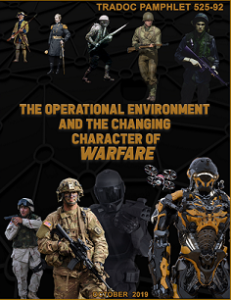 The Army’s current OE forecast features a modernizing U.S. military and a rising China that will become a peer competitor and the U.S. pacing threat around 2030. Russia will remain a near-peer threat with significant conventional capability to dominate regional competitors to include several NATO members. This vision of the future will face a series of tests in light of interrelated and converging events, the first of which is a global pandemic that is only in its initial phase. The COVID-19 pandemic caused a U.S. recession, threatening mid-term budget lines for the Army and TRADOC. The pandemic is also impacting Russian and Chinese investment decisions, although as of summer 2020 both of these countries have stated their intent to maintain current modernization funding levels. Additionally, the pandemic is starting to have a major impact on developing nations, potentially creating opportunities for the Chinese to gain influence, but also raising the specter of famine and mass migrations requiring an international humanitarian response. Budgets from 2023-2028 will need to address the growing deficit and domestic expenditures to mitigate job losses.
The Army’s current OE forecast features a modernizing U.S. military and a rising China that will become a peer competitor and the U.S. pacing threat around 2030. Russia will remain a near-peer threat with significant conventional capability to dominate regional competitors to include several NATO members. This vision of the future will face a series of tests in light of interrelated and converging events, the first of which is a global pandemic that is only in its initial phase. The COVID-19 pandemic caused a U.S. recession, threatening mid-term budget lines for the Army and TRADOC. The pandemic is also impacting Russian and Chinese investment decisions, although as of summer 2020 both of these countries have stated their intent to maintain current modernization funding levels. Additionally, the pandemic is starting to have a major impact on developing nations, potentially creating opportunities for the Chinese to gain influence, but also raising the specter of famine and mass migrations requiring an international humanitarian response. Budgets from 2023-2028 will need to address the growing deficit and domestic expenditures to mitigate job losses.
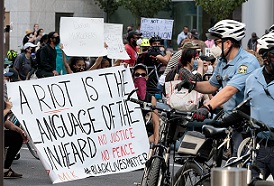
A second test for the assessed OE, the 2020 social unrest in the U.S., is potentially reshaping the way American citizens see their country and the Armed Services. Generations Z and Alpha will shape the military force starting in 2020 and through the next three decades. The ability to recruit and retain sufficient numbers of citizens—and immigrants—from these generations could depend on their outlook on a world created out of these significant shocks.
The Enemy Still Gets a Vote
The above can be viewed in terms of three overarching and inter-related shocks: pandemic, the resulting recession, and social unrest. Together they provide an opportunity for our 2 + 3 adversaries—Russia and China plus Iran, North Korea, and non-state extremist actors—to make gains in an accelerating competition space. China has used a combination of information warfare and political maneuvering to further efforts to assert complete control over Hong Kong and shape perceptions of the U.S. in parts of Eastern 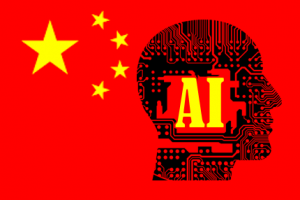 Europe and the developing world. China is also maintaining its modernization pace and envisions gaining competitive advantages in AI, quantum computing, and bioengineering by 2030. Whether successful or not, their investments will significantly close most existing overmatch gaps. The success of the Chinese and the potential stagnation of U.S. modernization efforts defines major components of the “Mind the Gap” world (see image below). This is the worst case of four used in G-2’s assessment of the operational environment post COVID-19. Russia plans to maintain its current ten-year modernization effort, but Putin will find it increasingly difficult to sustain as his population battles COVID-19 and a recession caused by depressed oil prices. Nevertheless, Russia will remain a significant regional power with the ability to launch rapid offensive operations on bordering NATO countries.
Europe and the developing world. China is also maintaining its modernization pace and envisions gaining competitive advantages in AI, quantum computing, and bioengineering by 2030. Whether successful or not, their investments will significantly close most existing overmatch gaps. The success of the Chinese and the potential stagnation of U.S. modernization efforts defines major components of the “Mind the Gap” world (see image below). This is the worst case of four used in G-2’s assessment of the operational environment post COVID-19. Russia plans to maintain its current ten-year modernization effort, but Putin will find it increasingly difficult to sustain as his population battles COVID-19 and a recession caused by depressed oil prices. Nevertheless, Russia will remain a significant regional power with the ability to launch rapid offensive operations on bordering NATO countries.
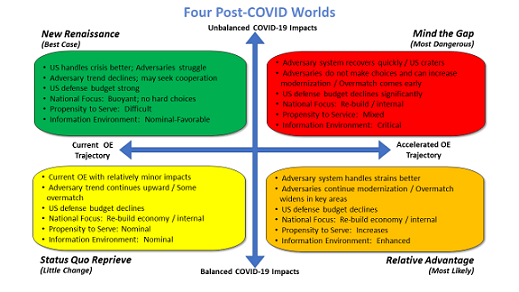
The Future Army is Smaller and more CONUS based
In the most likely (i.e., “Relative Advantage”) and most dangerous (i.e., “Mind the Gap“) worlds, the Army budget gets smaller as national resources are used to allay domestic concerns. End strength is reduced and the tension between readiness and modernization (i.e., material development) increases. The stress on functional training accounts and decreasing OPTEMPO funding for home station training are the canaries in the coal mine for how the Army will seek to resolve this tension. Moving some TRADOC courses to blended or distance learning and utilizing home station mission training centers for course delivery could provide a future cost savings, but initially it will require investment in infrastructure at the centers, content transformation,

and training for instructors. The atrophy of content development due to manpower shortages in TRADOC would exacerbate this problem. Additionally, moving courses to blended or distance learning will impact our sister Services and international partners. This risk is compounded as the Army becomes more CONUS based. Also, this program has a strategic impact across the State Department, intelligence community, and the country teams that will require support beyond the Army leadership.
Talent Acquisition and Retention in a Modernized, Smaller Army
The future Army will face a complex recruiting environment. A higher unemployment rate (above 6%) should make it easier to recruit traditional Army skill sets, but the high-tech skills required for the modernized Army will be difficult to recruit. Generations Z and Alpha will be smaller due to reduced birth rates, and early indications are that they will have a reduced propensity to serve. The parts of these generations that are interested in STEM skills 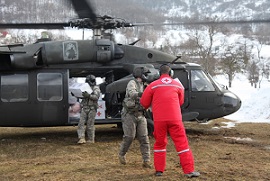 tend to be even less likely to serve and wary of the use of emerging technology to support the DOD. The pushback from millennials and older members of Gen Z to support the development of object recognition tools is an early indicator. Army recruiting will need to change the Army image to demonstrate the good the Service does for the U.S. and international community. It may also need to rely more heavily on
tend to be even less likely to serve and wary of the use of emerging technology to support the DOD. The pushback from millennials and older members of Gen Z to support the development of object recognition tools is an early indicator. Army recruiting will need to change the Army image to demonstrate the good the Service does for the U.S. and international community. It may also need to rely more heavily on 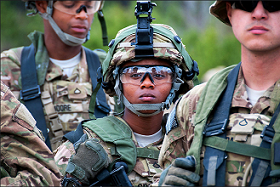 immigrants to the United States and an offer of citizenship for those who successfully complete some period of active service. The Army might need to explore recruiting those with aptitude for technology but then upskilling these recruits using coding academies or institutions like the USMA prep school. Once in the Service, these generations are going to expect learning support using digital assistants, gaming, and augmented reality/virtual reality. Patriotism and a desire to serve may wane as global connectivity creates new loyalties that weaken attachment to traditional nation states. The Army value of “commitment” may require redefinition to accommodate future generations’ desire for life balance and inclusivity. The idea of joining the Army to become a “warrior monk” will hold little attraction.
immigrants to the United States and an offer of citizenship for those who successfully complete some period of active service. The Army might need to explore recruiting those with aptitude for technology but then upskilling these recruits using coding academies or institutions like the USMA prep school. Once in the Service, these generations are going to expect learning support using digital assistants, gaming, and augmented reality/virtual reality. Patriotism and a desire to serve may wane as global connectivity creates new loyalties that weaken attachment to traditional nation states. The Army value of “commitment” may require redefinition to accommodate future generations’ desire for life balance and inclusivity. The idea of joining the Army to become a “warrior monk” will hold little attraction.
Emerging Technologies
By 2028, most of our devices will have some form of onboard intelligence. Narrow AI can accelerate transformation across the Army. AI could help the 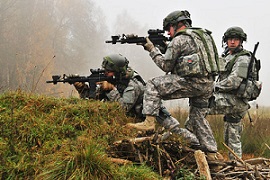 Army to better identify potential recruits, conduct onsite assessments of skills, train, and educate soldiers and leaders while connecting the operational force to the institutional force’s body of knowledge on warfare. For example, the data from every Combat Training Center (CTC) rotation should be available to all captains at
Army to better identify potential recruits, conduct onsite assessments of skills, train, and educate soldiers and leaders while connecting the operational force to the institutional force’s body of knowledge on warfare. For example, the data from every Combat Training Center (CTC) rotation should be available to all captains at 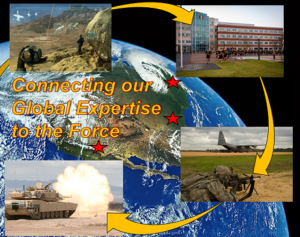 U.S. Army Centers of Excellence and majors experimenting with operational design at Fort Leavenworth. Key to enabling AI and realizing these opportunities’ potential is access to data. The Army is a data-rich organization with information on the OE, training events, combat operations, and soldier readiness, but data-rich does not mean data-ready.
U.S. Army Centers of Excellence and majors experimenting with operational design at Fort Leavenworth. Key to enabling AI and realizing these opportunities’ potential is access to data. The Army is a data-rich organization with information on the OE, training events, combat operations, and soldier readiness, but data-rich does not mean data-ready.
Much of the Army’s data would be characterized as “dark data,” or sitting in a silo and accessible only for limited single-use purposes. Currently, the Army is 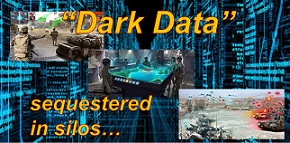 not aligned to take advantage of the next decade of tech evolution in AI. Business organizations have added chief data officers with access to corporate senior leadership to address these opportunities.
not aligned to take advantage of the next decade of tech evolution in AI. Business organizations have added chief data officers with access to corporate senior leadership to address these opportunities.
Technology and Transferring Knowledge
TRADOC’s role as the command that connects people and knowledge is a critical element that must capitalize on both technology and the changing cultural mores of the US population. TRADOC will have to embrace new  methods of collecting, developing, and maintaining the U.S. Army’s body of knowledge about war and broader conflict. TRADOC must continuously assess this body of knowledge to determine which elements remain relevant over time. Finally, the command must consider the attributes of those that serve in the Army and determine the most effective way to transfer relevant portions of this knowledge to those people.
methods of collecting, developing, and maintaining the U.S. Army’s body of knowledge about war and broader conflict. TRADOC must continuously assess this body of knowledge to determine which elements remain relevant over time. Finally, the command must consider the attributes of those that serve in the Army and determine the most effective way to transfer relevant portions of this knowledge to those people.
To learn more about the altered trajectory of the OE, watch the following two videos:
-
-
- The TRADOC G-2’s new “The 2 + 3 Threat” — addressing the near term OE.
-
-
-
- The Army Future Command’s new “Forging the Future in an Uncertain World” — addressing the mid-to-far term OE.
-
… and check out the following posts:
-
-
- Contagion: COVID-19’s impact on the Operational Environment (Part 4), by Ian Sullivan
-
>>> REMINDER: The Mad Scientist Initiative will facilitate our next webinar this 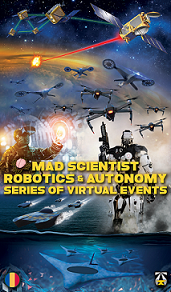 Thursday, 12 November 2020 (1100-1200 EST):
Thursday, 12 November 2020 (1100-1200 EST):
The Future of Unmanned Maritime Systems – featuring proclaimed Mad Scientist Mr. Sam Bendett, Researcher and Consultant, CNA; Mr. Kelvin Wong, Editor, Unmanned Maritime Vehicles, Janes; and Mr. Montrell Smith, Assistant Program Manager, Advanced Autonomy Capabilities, Unmanned Maritime Systems, U.S. Navy.
In order to participate in this virtual event, you must first register here [via a non-DoD network].
- Disclaimer: The views expressed in this post do not necessarily reflect those of the Department of Defense, Department of the Army, Army Futures Command (AFC), or Training and Doctrine Command (TRADOC).

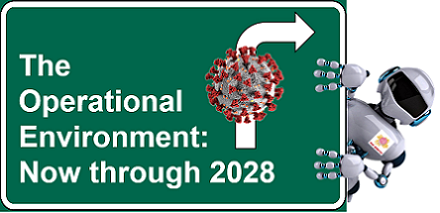


This post, like many others, accurately identifies issues, trajectories, incidents, et al, but this forum needs more deep diving and “solutioning”. Most posts mention these issues but not root causes or solutions. Science and true leadership are not just processes of observing trends, they are also processes of identifying root causes and actions that must be taken or stopped IOT foster positive outcomes and also block or mitigate negative outcomes. Would like to see more of those deep dive posts.